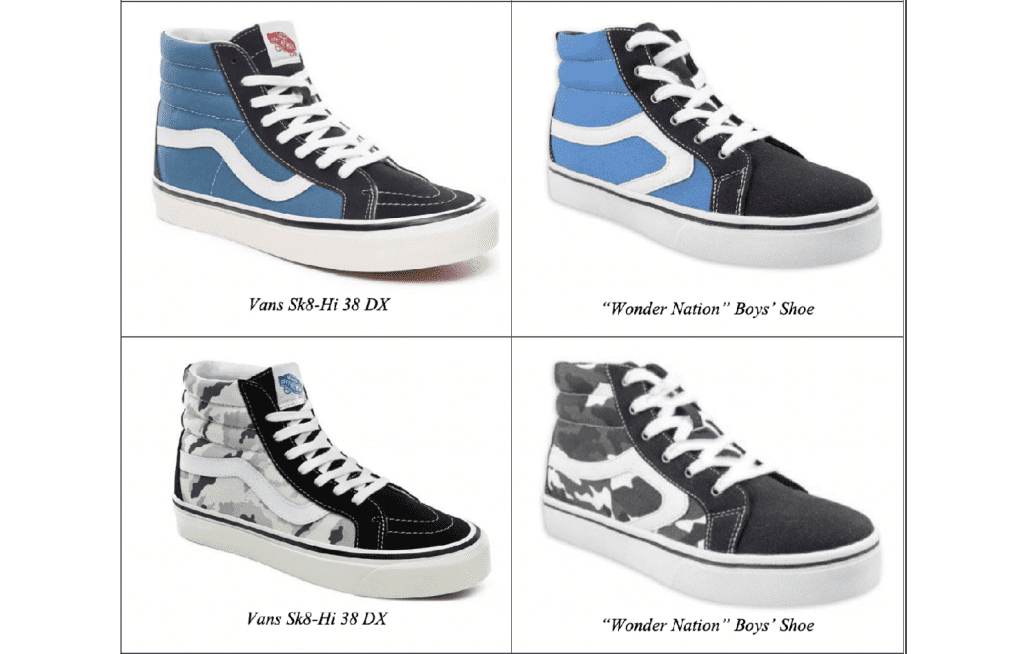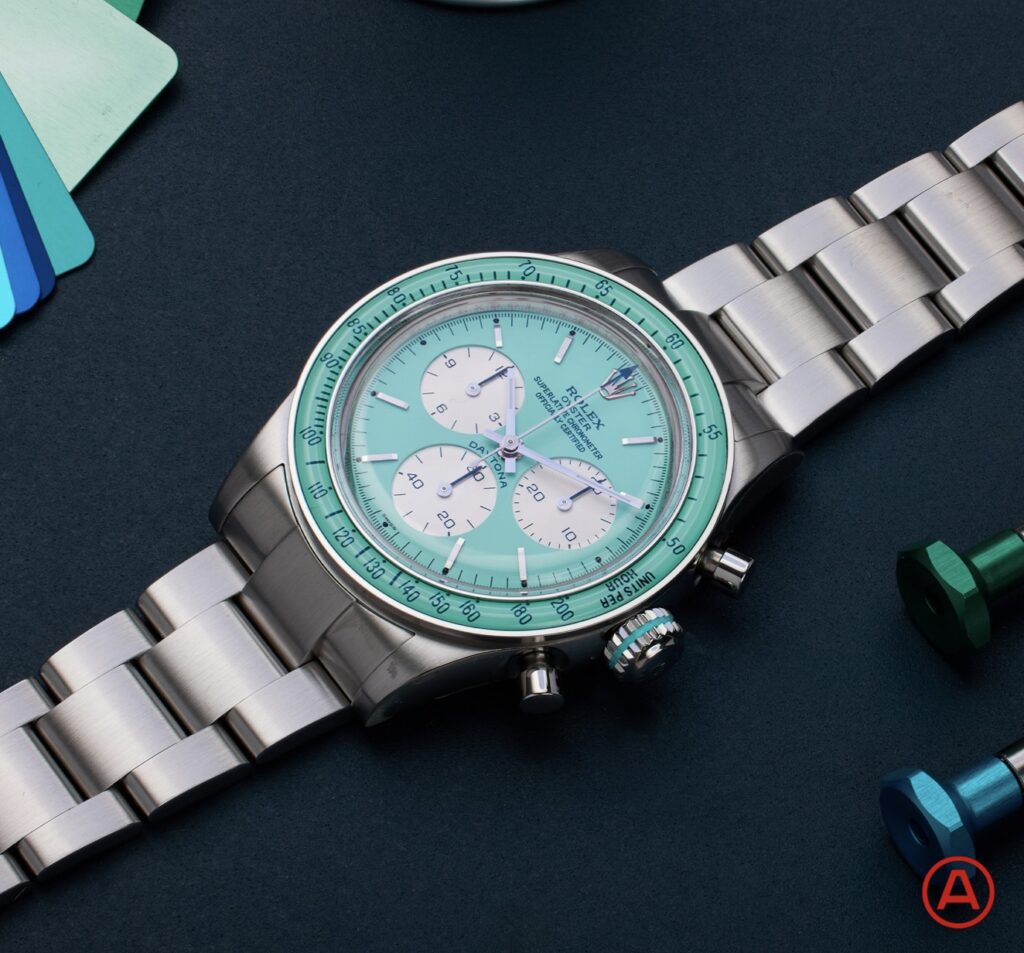Walmart is pushing back against Vans’ claims that it has embarked on “an escalating campaign to knock off virtually all of [its] bestselling shoes,” and is running afoul of its trademark rights in the process. On the heels of Vans and its parent company VF Corp. filing a trademark infringement suit against Walmart in a California federal court in November and subsequently seeking “the extraordinary remedy of a preliminary injunction” to stop Walmart from offering up the allegedly infringing footwear, the retail titan argues that the Vans and VF Corp.’s preliminary injunction motion falls short and should be denied.
In a filing in opposition to Vans and VF Corp. (the “plaintiffs”)’s motion for a preliminary injunction, Walmart argues that the two companies have failed to show that barring it from selling the allegedly infringing sneakers, including by removing them from more than 3,700 brick-and-mortar stores and its e-commerce site, is an appropriate remedy. Among other things, Walmart claims that the plaintiffs’ failure to act sooner in filing suit and seeking injunctive relief rebuts the presumption of irreparable harm (i.e., harm that cannot be compensated by a monetary damages award), which is the most critical element that weighs in favor of injunctive relief.
Walmart claims that there is a sheer lack of urgency at play in the case, as indicated by the plaintiffs’ failure to take action against it in connection with its alleged practice of “flood[ing] the market with cheap, low-quality, and confusingly similar shoes” for at least eighteen months from when it claims that Vans became aware of the lookalike shoe designs. (The plaintiffs allege that Walmart has sold over twenty different styles of copycat footwear “in a concerted, systematic, and escalating campaign to rip off Vans’ shoes in broad-brush fashion,” making it so that “the scope of Walmart’s infringement cannot be overstated.”)
The Bentonville, Arkansas-based retailer also claims that Vans then waited a month after filing its complaint to try to put Walmart’s sales of the footwear on hold by way of a preliminary injunction.

Beyond that, Walmart asserts that Vans is not suffering “any irreparable harm,” as it is not losing sales and its reputation is not being diminished as a result of Walmart’s footwear. And “even if the court were to find that Vans is likely to be irreparably harmed,” Walmart claims that the balance of equities “overwhelmingly” weighs in its favor. In fact, Walmart argues that it will be the party that is most damaged if an injunction is put in place since it would not only lose sales, but it would incur “the enormous logistical costs of removing from sale and disposing of more than [a redacted number of] pairs of shoes from thousands of stores across the country, estimated to be at least $1.4 million.” In total, Walmart contends that the issuance of a preliminary injunction would cost it “tens of millions of dollars.”
In an apparent consideration of the sustainability angle, Walmart claims that in addition to causing it to lose money, requiring it to remove the allegedly infringing shoes from the market – even just for the duration of the case – “would entail warehousing and destruction (i.e., incineration) of the removed shoes as well as all existing inventory.” Destruction of the shoes would be “necessary,” per Walmart, “due to product quality deterioration caused by mold and the aging of materials which would occur if the shoes are warehoused for too long a period of time.”
Taken together, Walmart argues that the lack of irreparable harm at play for the plaintiffs paired with a balance of the harm that it would incur as a result of an injunction means that the court should refuse to allow for a preliminary injunction.
Still yet, Walmart claims that Vans is not likely to prevail on the merits of the case, another key element that courts examine in making an injunction determination. Setting the stage, Walmart asserts that the case “does not involve alleged counterfeiting, does not involve identical marks, and [that] Vans’ claims are weak, and the issues of infringement and validity of Vans’ purported trade dress are hotly contested.”
First things first, Walmart takes aim at the rights that Vans bases its trademark claims on, stating that the “so-called trade dress, based on common law rights, is comprised of common elements – a rubberized sidewall with consistent height; upper portion of sidewall having a grooved appearance; textured toe box around front of the sidewall; visible stitching – all used by numerous sneaker brands.” In a “crowded field of similar looking sneakers,” Walmart alleges that “it is unlikely that consumers will associate the common elements and common overall look of Vans’ purported trade dress with Vans.”
The only aspect of Vans’ asserted trade dress that is “arguably distinctive,” according to Walmart “is the logo, the so-called Side Stripe Mark,” and even that is problematic, as the design on the side of Walmart’s sneakers is “strikingly different from the Vans ‘wave,’ and the overall commercial impression of the designs is completely different.”
With that in mind, Walmart turns to the issue of likelihood of confusion, which it argues that Vans cannot establish in large part because the design that appears on Walmart’s shoes is “totally different than the Vans Side Stripe Mark,” and the “vastly different logo designs, alone, are enough to obviate any likelihood of confusion, particularly in a sneaker market where shoe designs are often quite similar, and the logo is an important distinguishing feature.”

Additionally, Walmart argues that the risk of confusion is low because of the different price points at play and the distribution channels that its shoes and Vans’ shoes occupy. The allegedly infringing Walmart sneakers “all sell for less than $20, [and] are only sold at Walmart stores and on Walmart.com,” which is distinct from Van’s higher price points and its distribution, which consists of “Nordstrom’s, Urban Outfitters, Foot Locker, and Vans’ own retail stores,” and makes it so that “Walmart shoppers know what they are buying, and they are not confused or tricked into believing that they are buying Vans shoes.”
Among other things that Vans has put forth in arguing that Walmart’s lookalike footwear is likely to confuse consumers are “deeply flawed and biased [consumer] surveys,” and an array of “materials from the internet, such as social media posts,” the latter of which Walmart claims “lack foundation, are unauthenticated, and constitute hearsay.”
Even if the social media posts and other consumer commentary is admissible evidence, Walmart asserts that they do not support Vans’ likelihood of confusion arguments, and instead, “show that consumers are not confused and can easily distinguish Vans from Walmart brands.” For example, Walmart says that one social media user “purportedly says that Walmart’s $7 shoes ‘Look Like $60 Vans!’” Instead of weighing in Vans’ favor, Walmart claims that “this statement, and statements like it, illustrate that consumers are not confused and can easily distinguish between Vans and Walmart shoes.”
Ultimately, Walmart contends that its “position on the merits is strong [as] the parties’ shoes bear different designs and are sold in distinct channels of commerce; no rational consumer is likely to confuse the products, particularly at the point of sale.” Yet, it continues on to claim that “the Court need not even reach the merits [because] Vans falls woefully short of carrying its burden to prove that it is suffering irreparable harm and that the balance of hardships weighs in its favor.” And with that in mind, Walmart urges the court to deny Vans and VF’s motion “on those bases alone.”
The case is Vans, Inc. et al, v. Walmart, Inc., et al, 8:21-cv-01876 (C.D.Cal.)














